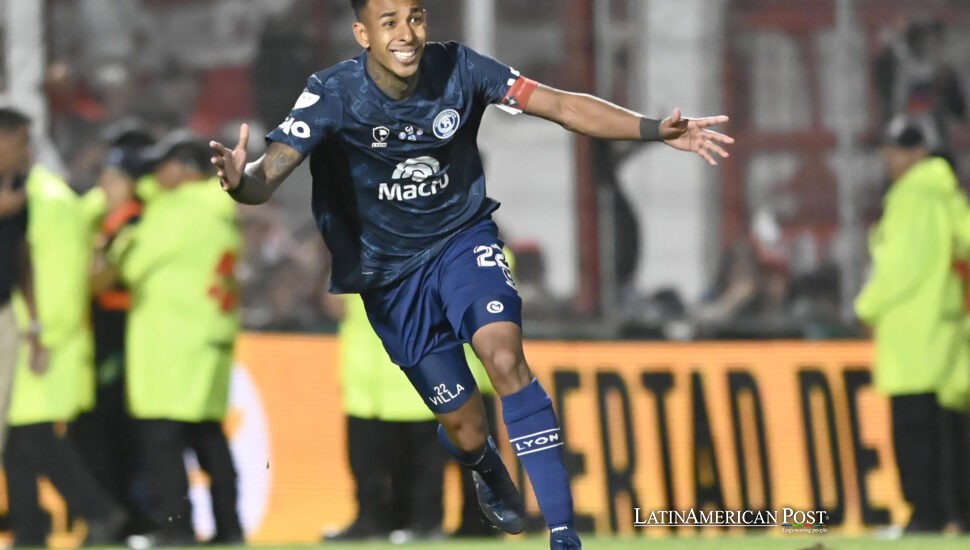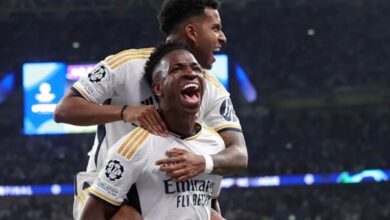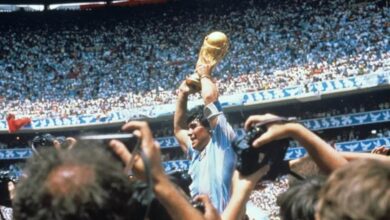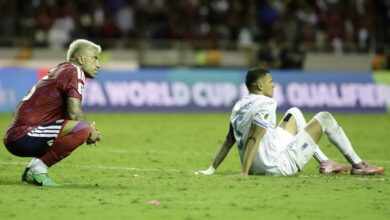How Argentine Independiente Rivadavia Finally Touched the Sky Asfter 112-Year Wait

In Córdoba, under storm clouds and history’s weight, Independiente Rivadavia of Mendoza conquered the Copa Argentina—outlasting two red cards, a stoppage-time heartbreak, and a retaken penalty to defeat Argentinos Juniors. A century of waiting ended in one unforgettable night.
A 112-Year Wait Ends in Córdoba.
In a stadium known as the Monumental de Córdoba, where echoes seem to hang between the terraces, Independiente Rivadavia arrived with hope older than memory. Founded in 1913, the club from Mendoza had chased a national trophy for more than a century. On Saturday night, against Argentinos Juniors, they finally caught it.
The script could have been written by a novelist who delights in agony. Álex Arce struck early, just nine minutes in, and when Matías Fernández blasted home a second past the hour, the Lepra’s blue-clad supporters began to believe the curse might finally lift. But football, especially Argentine football, never releases its drama easily.
Alan Lescano pulled one back almost immediately, and the tension thickened. By halftime, Independiente were already shorthanded—Maximiliano Amarfil was dismissed after a late challenge in the 41st minute. Their coach, Alfredo Berti, was sent off in the 77th for protesting, and in stoppage time, Alejo Osella followed, leaving just nine men to defend a dream as fragile as glass.
Then, in the 97th minute, came heartbreak: Erik Goody buried a low shot for Argentinos Juniors to make it 2–2. Extra time dissolved into exhaustion. The match would be decided by penalties—the cruelest, purest test of will. For Mendoza’s sons, it became a night their grandparents had imagined but never lived to see.
Nine Men, Two Equalizers, and a Goalkeeper’s Double Save
Penalties began like a ritual—each kick a prayer, each answer a heartbeat louder than the last. Both teams were perfect until the fourth round, when Argentinos’ Tomás Molina stepped up. In goal stood Gonzalo Marinelli, brought on late for this very moment. He dived left and saved. The Lepra bench erupted—but then came the twist.
Referee Nicolás Ramírez ordered the kick retaken for encroachment. The decision could have broken Marinelli. Instead, it steeled him. As the crowd booed and prayed, he faced Molina again. The whistle blew, the run-up came, and Marinelli went the same way—another save, even surer than the first. The stadium trembled. “That second stop,” one fan told EFE, “was when we knew it was destiny.”
Now everything rested on one man: Sebastián Villa, the Colombian who had already scored against River Plate in the semifinal. He approached the ball slowly, exhaled, and sent it high into the net. The scoreboard blinked 5–3, and with it, 112 years of waiting dissolved into a roar that shook Córdoba and rolled west across the Andes foothills.
Independiente Rivadavia were champions of Argentina—the first from Mendoza, the first in their history. Thousands poured into the streets back home, waving blue flags, singing until dawn. The fairy tale had found its ending.

The Road Through Giants to a Star
This triumph was no accident; it was carved step by step through giants. The Lepra began modestly, edging Estudiantes de Buenos Aires 1–0, then surviving Platense on penalties after a 2–2 draw. They beat Central Córdoba of Rosario 2–1 and Tigre 3–1. But the semifinal was where legend took shape. Facing River Plate, one of the Cup’s colossi, they defended for their lives and won 4–3 in a shootout that silenced the Monumental of Núñez.
By the time they reached Córdoba, belief had become muscle memory. “We arrived tired but united,” Berti told EFE before the final. “This team doesn’t give up.”
The victory brings more than a trophy. It earns Independiente Rivadavia a place in the 2026 Copa Libertadores, South America’s most prestigious competition—a stage once unthinkable for a club from Mendoza. They’ll also face the winner of the Trofeo de Campeones in the Supercopa Argentina, a chance to measure themselves again against the nation’s elite.
For the Lepra’s fans, though, the numbers matter less than the sight of their captain lifting silver under the Córdoba lights. “It’s like waking from a dream you didn’t know you were having,” said a supporter wrapped in a blue flag, quoted by EFE. “We waited 112 years to see this. We can wait another hundred years to forget it.”
From Bakery Roots to Lepra Blue—and What Comes Next
The story of Independiente Rivadavia stretches back to 1902, when local workers and businesspeople formed the first team that would one day become the Lepra. In 1913, amid disputes with the Mendocina federation, those players regrouped as Club Atlético Independiente; six years later, a merger with Sportivo Rivadavia gave the club its enduring name. The color came later, a proposal by entrepreneur Bautista Gargantini, who chose blue to symbolize renewal.
In the early years, they wore red, white, and green stripes—the tricolores—and dominated local football, winning eight straight titles between 1913 and 1920. They helped found the Liga Mendocina in 1921 and have since claimed 25 provincial championships, a record that made them kings of Mendoza but left them outsiders on the national stage.
Their nickname, La Lepra, has several tellings. The most enduring traces it to a 1920 charity match played to support a hospital treating leprosy patients—a gesture of compassion that stuck as identity. Through decades of financial struggle, relegations, and rebirths, that spirit of solidarity has defined them.
In 2023, they finally earned promotion to Argentina’s top flight after beating Almirante Brown 2–0 in the Primera Nacional final—Saturday’s triumph crowns that rise, proving that persistence can be its own kind of genius.
The team returned to Mendoza to a hero’s welcome. Thousands jammed the streets, fireworks lit the night, and the team bus crawled through a human tide of joy. After 112 years, Independiente Rivadavia had finally broken the ceiling of history—and found the sky waiting on the other side.
Also Read: Eduardo Nájera’s Homecoming: How a Viking’s Son Is Rewriting Mexico’s Basketball Future




